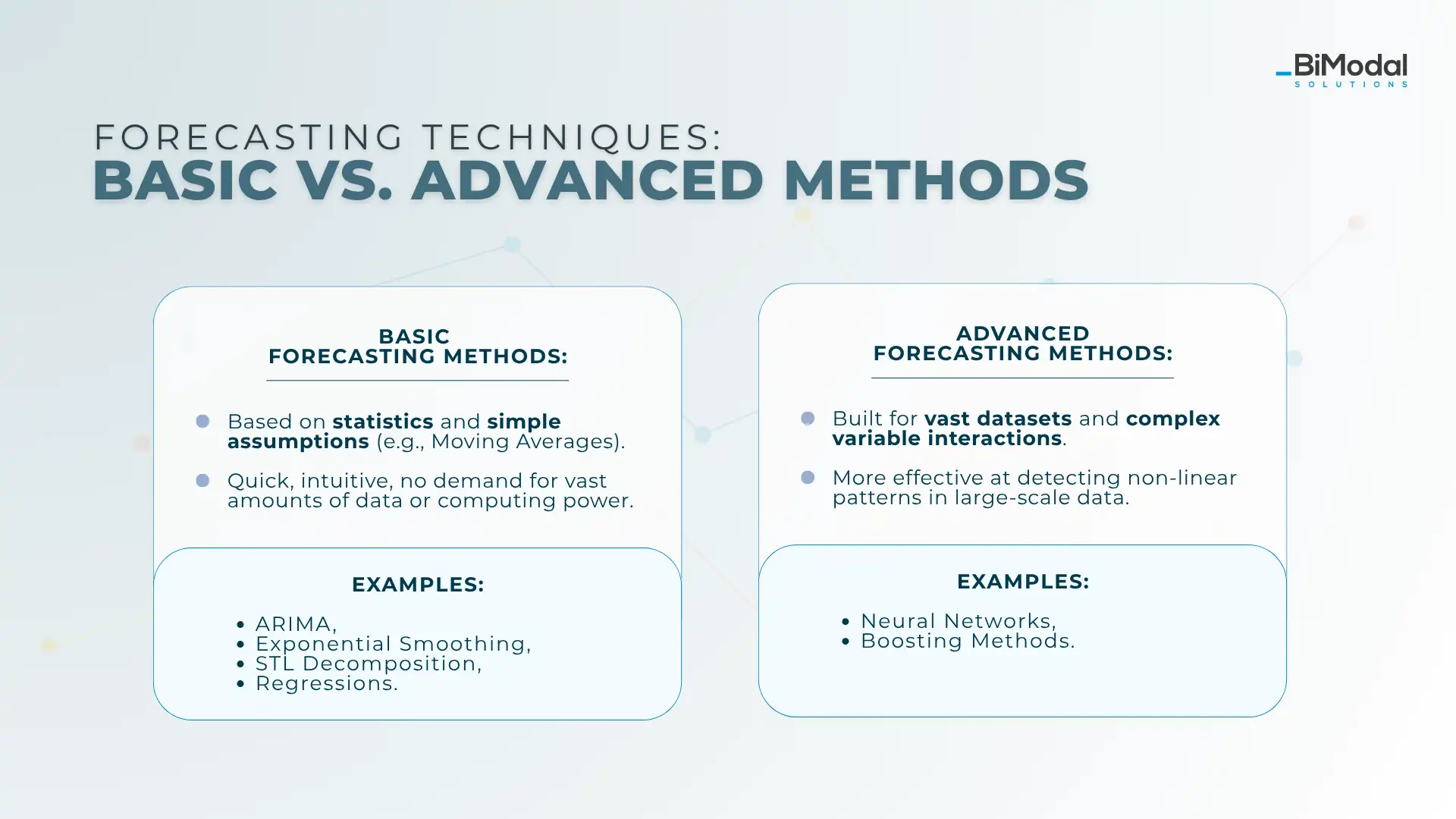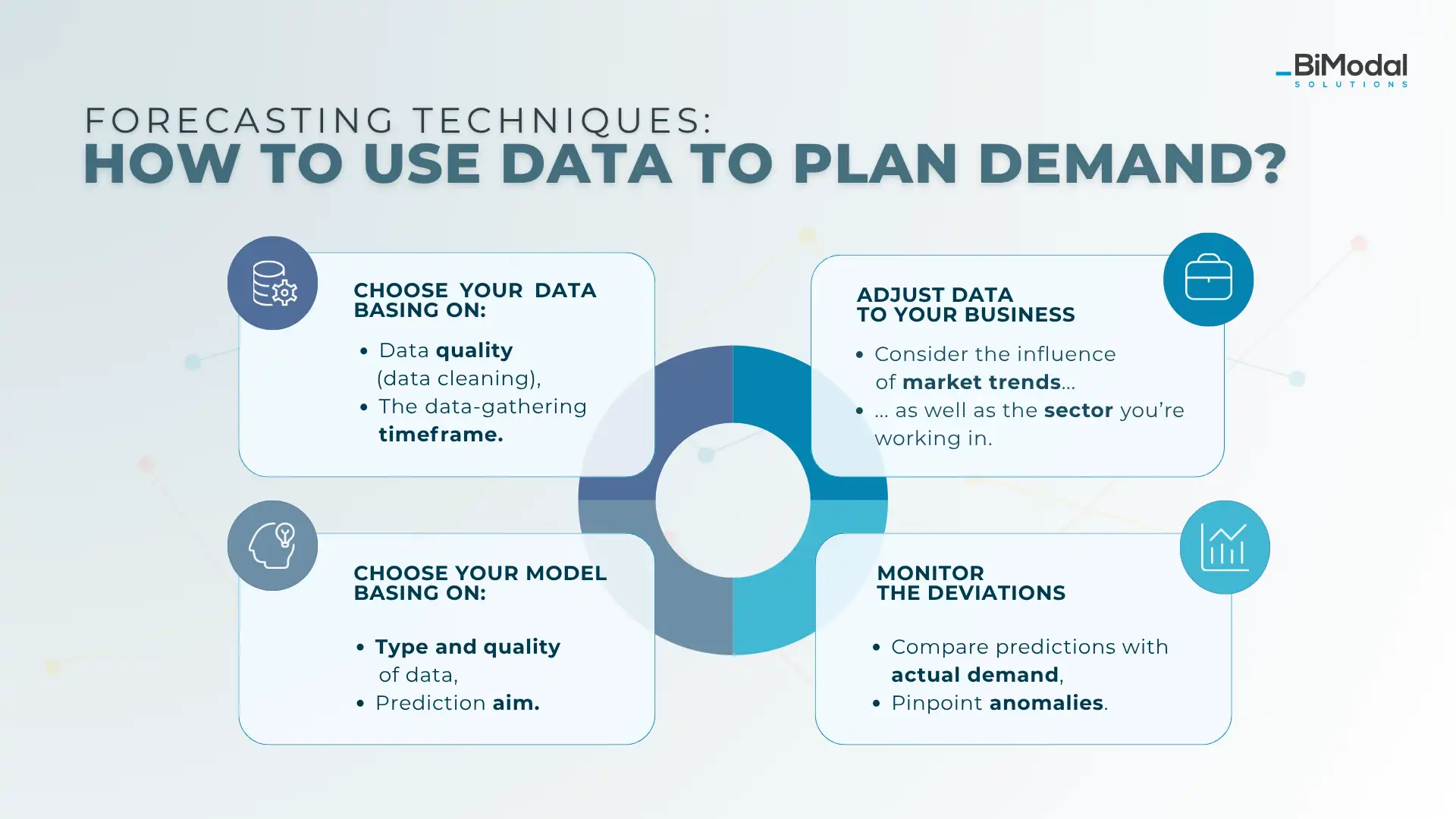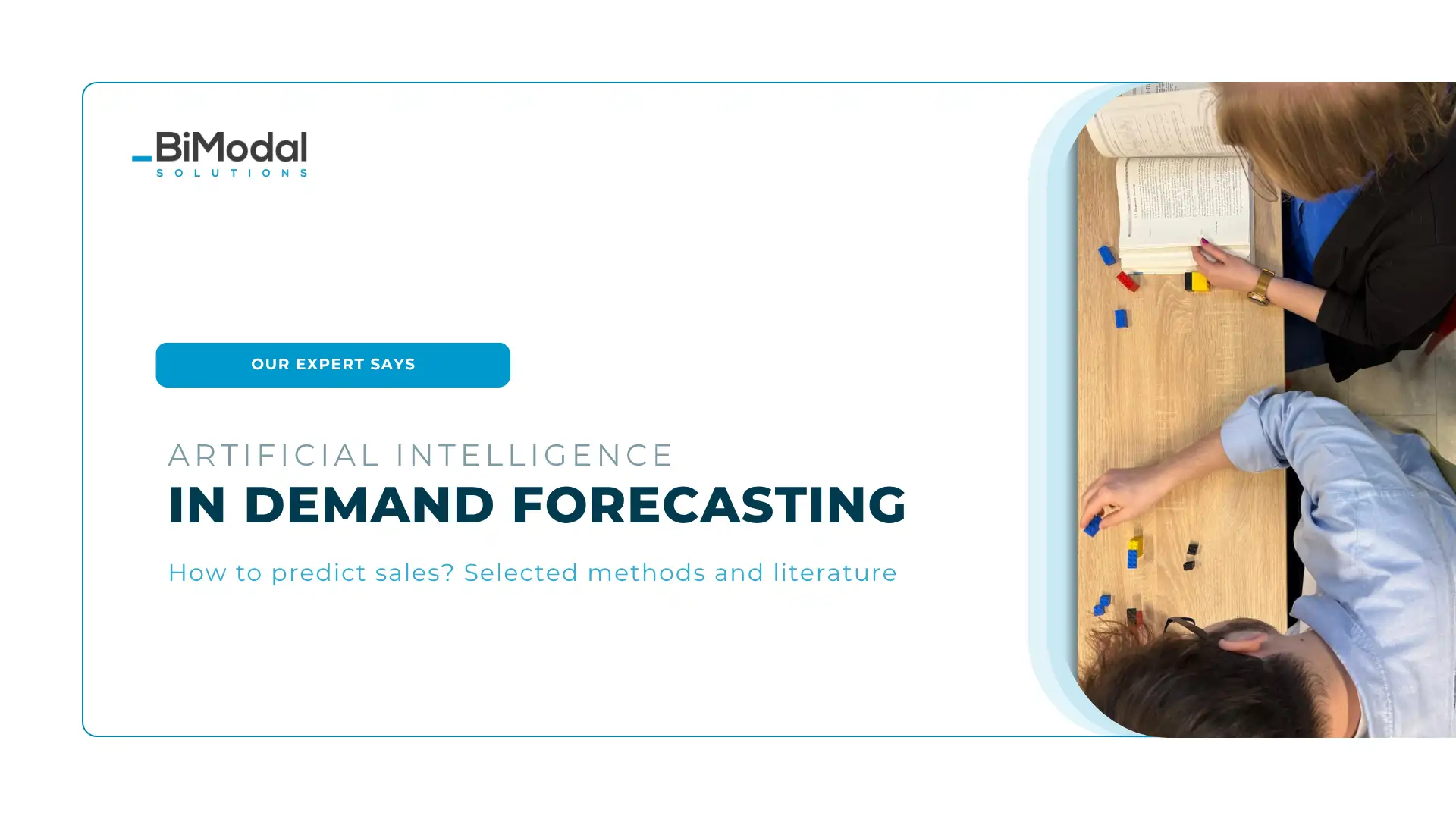Author: Magdalena Foltyn, PhD
"Forecasting is not about predicting the future, but about understanding the past and the present to make informed decisions about the future."
– Spyros Makridakis
Read this article to learn:
- What are the basic and advanced demand forecasting techniques, and in which contexts are they applicable?
- Why is the choice of appropriate data and business context vital for the forecast's accuracy?
- What are the sources of reliable knowledge about demand forecasting, and how to apply such benchmarks as M-Competitions?
In every business, effective demand planning relies on making informed predictions about the future. The more information we have, the more accurate these predictions can be. We engage in this type of forecasting daily through routine tasks, such as shopping or fueling our cars.
Fields such as production, retail, and supply chain management consider demand forecasting to be one of the most vital components of their management processes. In these areas, both classical statistics and advanced AI-based solutions are valuable tools. By using proper methods, we can predict upcoming trends, optimize product flow in our inventory, and correctly manage operational and strategic costs.
In this article, I will introduce the most popular and effective models for demand forecasting in general. I will also provide references to useful sources of knowledge regarding demand forecasting.
Qualitative forecasting method – Bayesian inference
When we aim to solely predict whether the sale will occur or be generally larger or smaller, we can use Bayesian inference. This method is used to calculate conditional probability based on earlier, historical events, along with our subjective beliefs.
Example: Based on historical events from the previous year, we can predict that the future demand forecast for Christmas lights will peak in December. Similarly, we can expect the amount of ice cream sold during winter to be significantly lower than during the summer months.
This qualitative method applies to a broad spectrum. However, even in this context, it is bound to several constraints, as more often than not, we predict the sale to happen nonetheless; the information vital to us is the quantitative demand forecast.
In other words, we want a numerical value.
So, how do we quantify our data interpretation to receive a quantitative forecast?
Quantitative forecasting techniques: statistics and Machine Learning
Up until now, numerous quantitative demand forecasting methods have already been established, and the rapid development of this domain in the business context has become quite certain. I distinguish two main categories of demand forecasting models: the basic and the advanced ones. Let us examine the differences between the two groups and how such methods may be successfully applied.

Demand forecasting process: basic techniques
Let's begin with the basic methods of predicting future customer demand. Why do they deserve our focus?
Because 'basic' does not mean 'simplistic'.
While my terminology may appear to be elusive, the basic methods can be effectively applied in your organization, provided there are no assumptions about dynamic trend fluctuations impacting demand and supply. The basic methods are based on statistics and simple assumptions.
One of the basic yet effective demand forecasting methods I would like to discuss is moving averages. This prognostic technique relies on averaging the demand value from a defined timeframe to level out fluctuations and gain insight into the overarching trend. Models using moving averages are, e.g., ARIMA and Exponential Smoothing.
Find the recommended sources in the following chapters of this article.
How to calculate demand forecasting: advanced methods
We witness the progress of global digitization as much as the development of more accurate statistical methods, forecasting, and planning solutions. This is why companies reach for Machine Learning techniques—they enable companies to optimize this process and predict future demand more accurately, including abrupt demand increases or a vast volume of exogenous variables.
An AI-powered demand forecasting model can track more subtle dependencies than basic demand forecasting techniques. There are several forecast planning methods I would like to mention:
- neural networks,
- NBEATS,
- boosting methods (e.g., XG Boost).
Why should we implement foundational demand planning methods when we have AI?
The basic type of demand forecasting aligns perfectly in a predictable environment. When customer demand for a product or service progressively changes, with seasonality and trends remaining steady, the basic models deliver a surprisingly accurate demand forecast. They are easy to use, intuitive, and do not require a vast amount of data or computing prowess.
However, demand forecasting in supply chain planning in a globalized world calls for more sophisticated methods. In such a context, we need to consider a wider scope of variables, numerous data sources, short product lifespans, and other factors that cannot be accurately forecast while using the traditional approach.
Many entrepreneurs utilize basic demand forecasting methods that are perfectly valid in terms of predicting customer demand for singular products. In turn, more complex cases, such as predicting with the inclusion of numerous variables, will benefit from using more sophisticated methods, such as neural networks.
Which data should be used to predict demand?
The answer to this question largely depends on the industry, the type of data, and the purpose of the forecast. Demand modeling looks different in the retail sector than in manufacturing or logistics.
So, given this context, what kind of information actually matters? The key is the proper selection of historical data—both in terms of quality and time range—as well as an understanding of the market phenomena that may have influenced it and include it as exogenous variables if necessary.
The analysis itself is not only about choosing the right model but also about being aware of the business context and monitoring potential deviations from the norm. Only then do demand forecasts have a chance to be both mathematically correct and truly useful for decision-making.

How to find accurate demand forecasting models: knowledge-sharing initiatives
In the field of demand forecasting, there exists a standardized set of datasets referred to as "benchmark datasets." These datasets are used to compare different prediction models to identify the most effective ones. Among the recommended resources are the Makridakis Competitions, or M-competitions, which are a series of international contests. They attract both researchers and business practitioners with substantial experience in demand forecasting.
Since the first edition commenced in 1982 up until the most recent M6 one (in 2024), they aimed not only for the most accurate demand forecasting methods to emerge but also to promote transparency and the development of prediction tools. Each edition (from M-1 to M-6) introduced new challenges, from historical data and real-time expert assessment to AI models and the influence of prediction on investment models.
The overview of previous editions with the appropriate attachments is presented below.
- Makridakis, Spyros; Hibon, Michèle: The M3-Competition: results, conclusions, and implications, in: International Journal of Forecasting, 2000, Vol. 16, p. 451–476.
- Makridakis, S.; Andersen, A.; Carbone, R.; Fildes, R.; Hibon, M.; Lewandowski, R.; Newton, J.; Parzen, E.; Winkler, R.: The accuracy of extrapolation (time series) methods: Results of a forecasting competition; in: Journal of Forecasting; 1982; Vol. 1; Issue 2; p. 111–153.
- Makridakis, Spyros; Chatfield, Chris; Hibon, Michèle; Lawrence, Michael; Mills, Terence; Ord, Keith; Simmons, LeRoy F.: The M2-competition: A real-time judgmentally based forecasting study; in: International Journal of Forecasting; 1993; Vol. 9; Issue 1; p. 5–22.
- Makridakis, Spyros; Spiliotis, Evangelos; Assimakopoulos, Vassilios: The M4 Competition: 100,000 time series and 61 forecasting methods; in: International Journal of Forecasting; 2020; Vol. 36; Issue 1; p. 54–74.
- International Institute of Forecasters: M3-competition (full data); Online; 2012.
- Makridakis, Spyros; Spiliotis, Evangelos; Assimakopoulos, Vassilios: The M4 Competition: Results, findings, conclusion, and way forward; in: International Journal of Forecasting; 2018; Vol. 34; Issue 4; p. 802–808.
- Hyndman, Rob J.: M4 Forecasting Competition; Online; 2017.
- Makridakis, Spyros; Spiliotis, Evangelos; Assimakopoulos, Vassilios: M5 accuracy competition: Results, findings, and conclusions; in: International Journal of Forecasting; 2022.
- Makridakis, Spyros; Spiliotis, Evangelos; Ross Hollyman; Fotios Petropoulos; Norman Swanson; Anil Gaba: The M6 forecasting competition: Bridging the gap between forecasting and investment decisions; in: International Journal of Forecasting; 2024.
Demand forecasting - literature
The number of methods for forecasting demand may be overwhelming. To facilitate this choice and highlight the ones your enterprise will adapt the most successfully, below you'll find the sources worth getting acquainted with:
- Forecasting Methods and Applications – Makridakis, Wheelwright, Hyndman
This is a basic theoretical foundation that broadly discusses classical forecasting demand and supply techniques, including changing variables, exponential smoothing, and regression. This book is a perfect starting point for those interested in the topic of forecasting demand and supply chain management. I do recommend it mostly due to its accessible language and plethora of examples.
- The Deep Learning Book – Goodfellow, Bengio, Courville
This book dives deep into the foundations of deep learning and the theoretical basics of neural networks, along with their architecture. It also constitutes a solid basis to understand such models as RNN or LSTM.
The book's website is available here
- N-BEATS: Neural Basis Expansion Analysis for Interpretable Time Series Forecasting
This article presents a modern approach to neural link-based prognosis. What's worth your attention? This article describes one of the best results of the forecasting benchmark that was ever achieved.
- XGBoost Documentation
Here you can find the documentation for one of the strongest booster methods for tabular data. They are quite flexible and fast-paced, which results in good forecasting accuracy with appropriate feature engineering.

